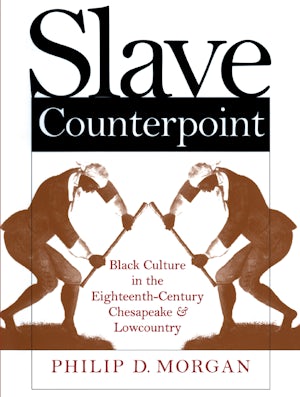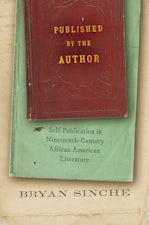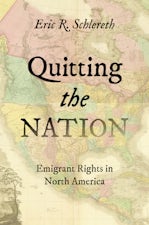Slave Counterpoint
Black Culture in the Eighteenth-Century Chesapeake and Lowcountry
By Philip D. Morgan

736 pp., 6.125 x 9.25, 27 illus., 31 tables, 9 maps, 11 figs., notes, index
-
Paperback ISBN: 978-0-8078-4717-6
Published: April 1998
Published by the Omohundro Institute of Early American History and Culture and the University of North Carolina Press
Buy this Book
Published by the Omohundro Institute of Early American History and Culture and the University of North Carolina Press
Awards & distinctions
1999 Bancroft Prize, Columbia University
A 1998 Choice Outstanding Academic Title
Finalist 1998 Los Angeles Times Book Prize
A 1998 New York Times Book Review Notable Book
1999 Library of Virginia Literary Award for Non-fiction
1998 Best Book Award, South Carolina Historical Society
1999 Frank L. and Harriet C. Owsley Award, Southern Historical Association
Second Prize, Frederick Douglass Book Prize, Gilder Lehrman Center for the Study of Slavery, Resistance, and Abolition
1998 Jacques Barzun Prize, American Philosophical Society
1998 Albert J. Beveridge Award, American Historical Association
1999 Elliot Rudwick Prize, Organization of American Historians
1998 Wesley-Logan Prize, American Historical Association
Morgan explores the role of land and labor in shaping culture, the
everyday contacts of masters and slaves that defined the possibilities and limitations of cultural exchange, and finally the interior lives of blacks--their social relations, their family and kin ties, and the major symbolic dimensions of life: language, play, and religion. He provides a balanced appreciation for the oppressiveness of bondage and for the ability of slaves to shape their lives, showing that, whatever the constraints, slaves contributed to the making of their history. Victims of a brutal, dehumanizing system, slaves nevertheless strove to create order in their lives, to preserve their humanity, to achieve dignity, and to sustain dreams of a better future.
About the Author
Philip D. Morgan is professor of history at Johns Hopkins University.
For more information about Philip D. Morgan, visit
the
Author
Page.
Reviews
"The closest [examination] yet made of slave life anywhere before the nineteenth century. . . . Morgan's account is exhaustive . . . in its detail, but it is more than a recovery of hard-to-find facts. It is informed throughout by Morgan's recognition that slavery, as an extreme form of domination, resonates with the ambiguities present in all human relations."--New York Review of Books
"A major reinterpretation of early American history that should attract a wide readership."--Choice
"Authoritative and detailed. . . . Morgan's synthesis draws upon a wealth of social, political, legal, economic, literary, religious and anthropological sources to illuminate through a variety of prisms what he calls 'the core contradiction of slavery--treating persons as things,' which guaranteed that master and slave would be thrust apart, even as they were bound inextricably together."--Los Angeles Times Book Review (Best Nonfiction Books of 1998 issue)
"An exhaustive and authoritative synthesis of slavery in the Chesapeake (Virginia and Maryland) and the South Carolina Lowcountry, Slave Counterpoint is also a fine example of comparative history."--Richmond Times-Dispatch
"A monumental social history of slavery in the eighteenth-century Chesapeake region and in the Carolina and Georgia low country."--Robert L. Paquette, Washington Times
"A massive reconstruction of life in the 18th-century American South. . . . [Morgan] sets out to provide 'a balanced appreciation for the oppressiveness of bondage and of the ability of slaves to reshape their lives.' He has succeeded splendidly, and in the process reminded modern readers that the world of the 18th century is not so distant as they sometimes imagine."--New York Times Book Review



